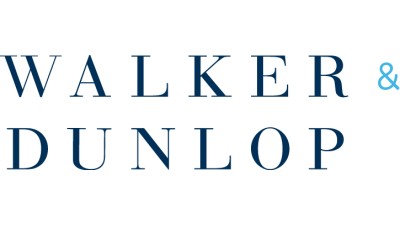Walmart's 'Healthy Paranoia' Has It Spending Billions On E-Commerce, Supply Chain

The Walmart home office in Bentonville, Arkansas, is decorated with various inspirational quotes from founder Sam Walton, but John Furner, CEO of Walmart U.S., said that his favorite saying at the company is one that gets repeated in morning standup meetings in Walmart stores across the country.
“The manager will say, ‘The only constant at Walmart is …’ and our associates will all say, ‘Change,’” Furner told Walker & Dunlop CEO Willy Walker on this week’s Walker Webcast. “We’re always trying to grow business and anticipate how the customer will want to be served without losing what we already have going for us.”
The year has been one of dramatic change for Walmart’s more than 4,700 stores in the U.S., with every location’s safety policies, employee headcount and opening hours in flux. But much of the biggest change was happening behind the scenes, as the company worked to pivot its business model toward one that would thrive in a world of social distancing.
Walmart’s spending on new brick-and-mortar stores and relocations dropped from $331M in 2019 to $77M in 2020, according to the company’s 2020 annual report. Meanwhile, the company invested almost $5.6B in “e-commerce, technology and supply chain.” While the vast majority of the company’s sales in 2020 were still from in-store shopping rather than e-commerce, Furner didn’t deny that the year represented a definite pivot away from the explosive growth of Walmart’s physical footprint throughout the 1990s and 2000s.
“We’re very pleased with the footprint we have,” Furner said. “Tech investments are going to be important going forward. In order to create innovation and continue to delight customers, we’re going to have to keep thinking like a digital enterprise.”

2020 was a year of technological experimentation for Walmart, as what might otherwise have been three to five years of e-commerce demand growth was compressed into a few months in the spring, Furner said. As the demand for in-store pickup and home delivery spiked rapidly, the Walmart team had to move quickly to adapt to shifting consumer preferences.
The company decided to combine its two mobile applications, Walmart and Walmart Grocery, into one. Furner admitted that the organizational charts for Walmart’s technology teams are still somewhat fragmented, especially since the May closing of Jet.com, an e-commerce brand that Walmart had acquired in 2016. However, he said the hope is that the brand provides a unified front to digital consumers, and he described the positive feedback he has received from consumers and Walmart employees about the smoothness of digital transactions and delivery from the new site.
In September, the company launched Walmart+, a yearly subscription program that provides unlimited free delivery from Walmart stores, discounts on fuel and exclusive shopping tools. Although the company has not released data about how many subscribers the new program has, estimates peg the number at around 30 million paid subscriptions. So far, it’s a fraction of the 120 million that belong to the program’s biggest rival, Amazon Prime.

However, Willy Walker pointed out, Walmart’s massive geographic footprint gives the company a large advantage over Amazon when it comes to last-mile delivery. The sheer volume of data that Walmart collects on consumer behavior also lets the company predict when certain products will be out of stock and build a more efficient supply chain.
Furner described Walmart as having a sense of healthy paranoia: He said he believes worrying about what the competition will do next breeds innovations to make the retail experience smoother. He described working as a Walmart store manager in the early 2000s and offering a way for shoppers to fax in their orders and have associates fulfill them.
“It was tiny and it didn’t work, but clearly we were onto something,” Furner said. “I try to assume that every idea might be the next thing. It might scale to $1M or scale to $1B. The surest way not to know is never to try it.”
On Feb. 3, Walker will host Mauro Guillén, Zandman professor of international management at the Wharton School. Register here for the event.
This article was produced in collaboration between Walker & Dunlop and Studio B. Bisnow news staff was not involved in the production of this content.
Studio B is Bisnow’s in-house content and design studio. To learn more about how Studio B can help your team, reach out to studio@bisnow.com.

